The Kenwood KD-650 is an amazing turntable, one of the very best to come out of the 1970’s and 80’s. If you ever get a chance to purchase either the KD-650, with Kenwood tonearm, or the KD-600, go for it.
The KD-650 is also one of the best-performing turntables you can own for sensible money. Featuring a brushless and slotless direct-drive motor, quartz phase-locked speed control, high-inertia machined and balanced aluminium platter and iconic ARCB synthetic composite chassis, this is a heavy hitting deck.
This is literally space age engineering of course, compared to the wobbly ‘pipe and slippers’ belt-drive decks you could buy at the time. No wonder the market was literally torn open when decks like these appeared!
The unit is also available as the KD-600 which is supplied with two tonearm bases, one designed for the Ortofon AS-212 mkII and the other for the SME 3009 or Infinity Black Widow laboratory reference tonearms.
You can read more about the KD-650 at the legendary Vinyl Engine, and I have a few technical tips and discussion below. Specification for this wonderful turntable are as follows:
Specifications
Drive: quartz PLL direct-drive system
Motor: 20-pole 30 slot brushless DC servo motor
Platter: 33cm, 2.6kg aluminium alloy die-cast
Speeds: 33.33 and 45rpm
Wow and flutter: less than 0.025% WRMS
Signal to noise ratio: more than -75dB
Tonearm: static-balance type, s-shaped pipe arm, eia plug-in connector
Effective length: 245mm
Overhang: 15mm
Stylus pressure range: 0 to 3g
Usable cartridge range: 2 to 12g
Dimensions: 490 x 165 x 460mm
Weight: 15.4kg
Service & Repair
This particular KD-650 needed some repairs to the speed lock indicator, touch control switches, a motor service and a general tune-up. The deck came up very nicely after having apparently not worked and sat in the shed for many years.
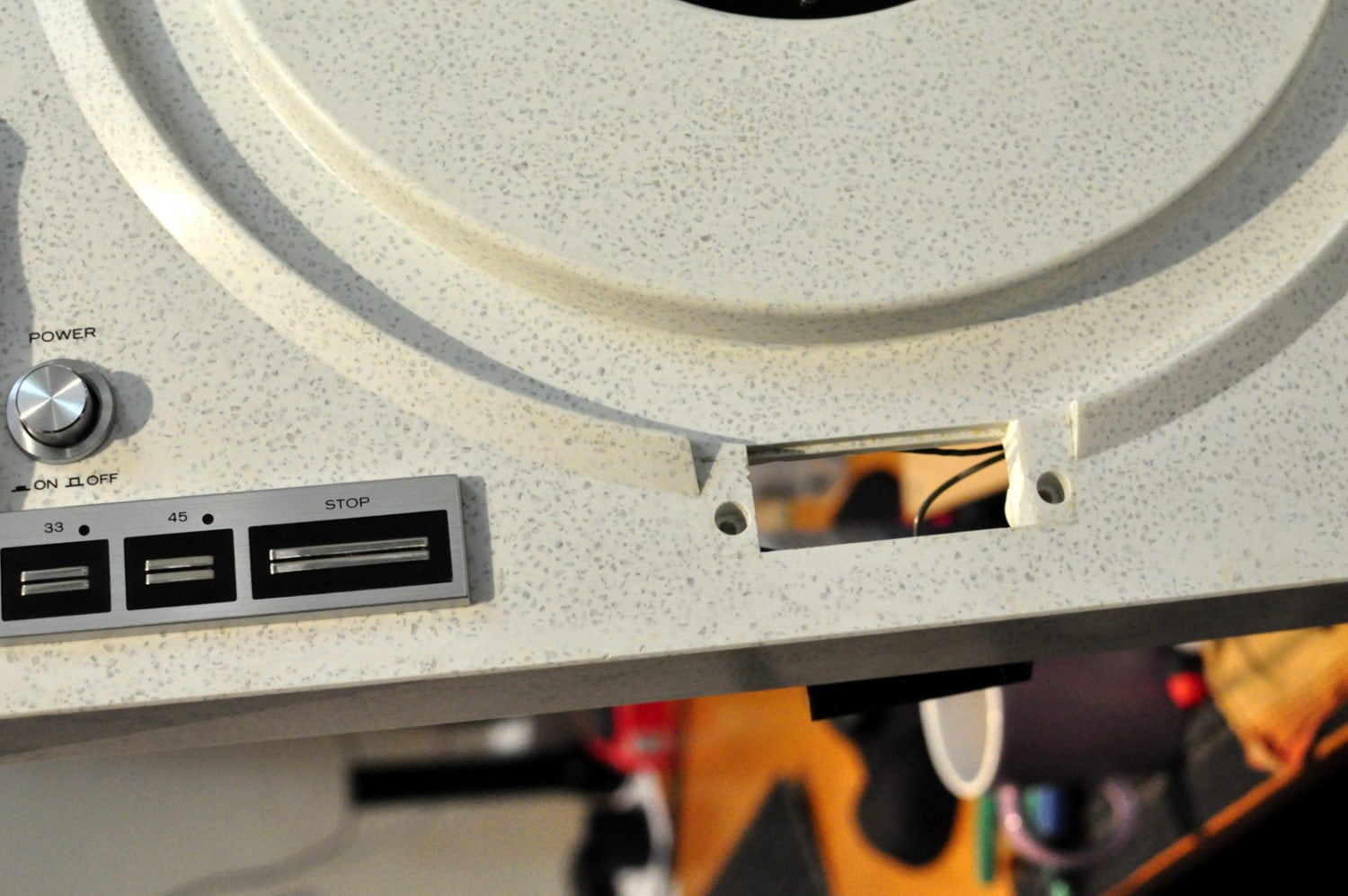
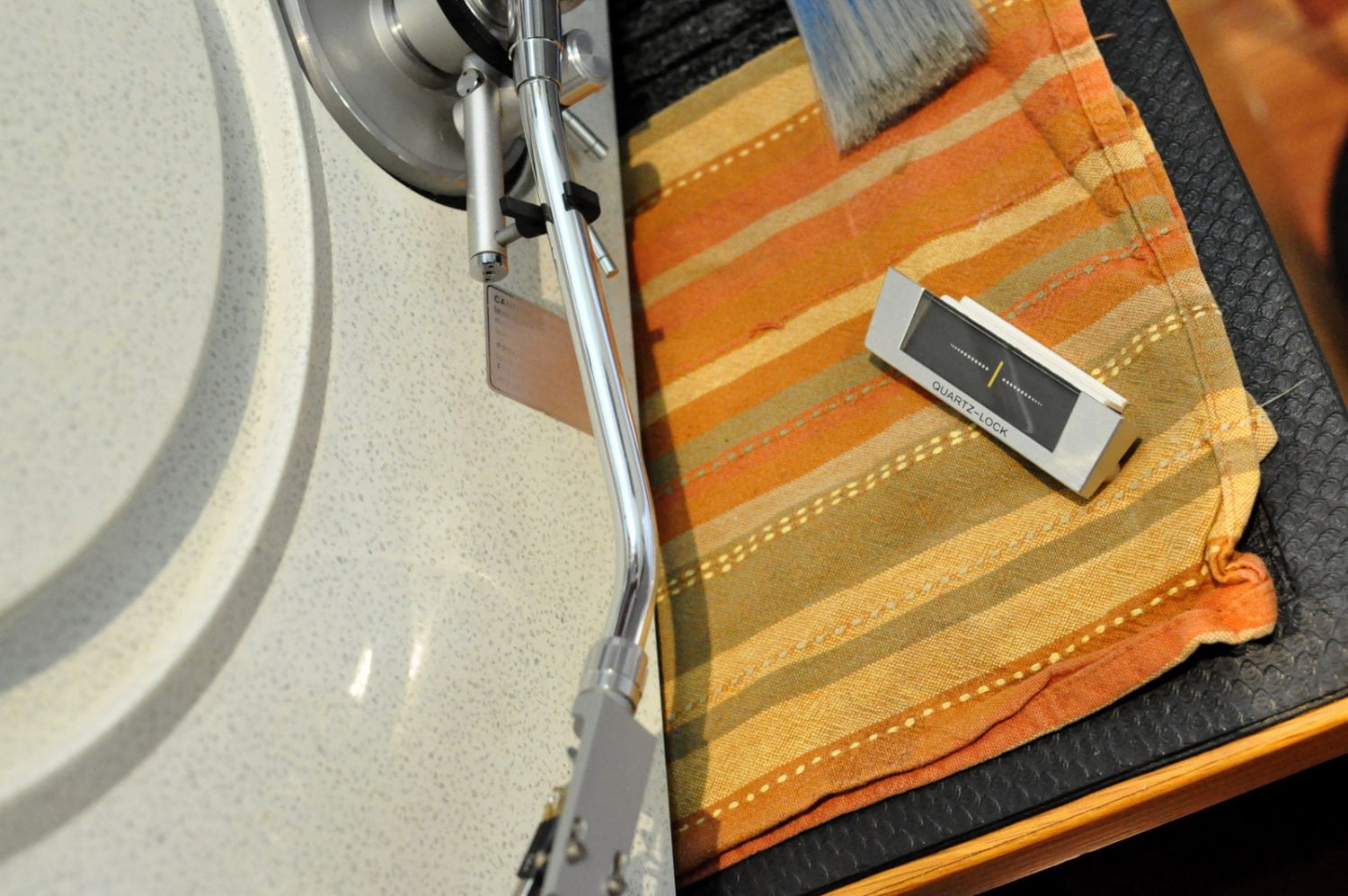
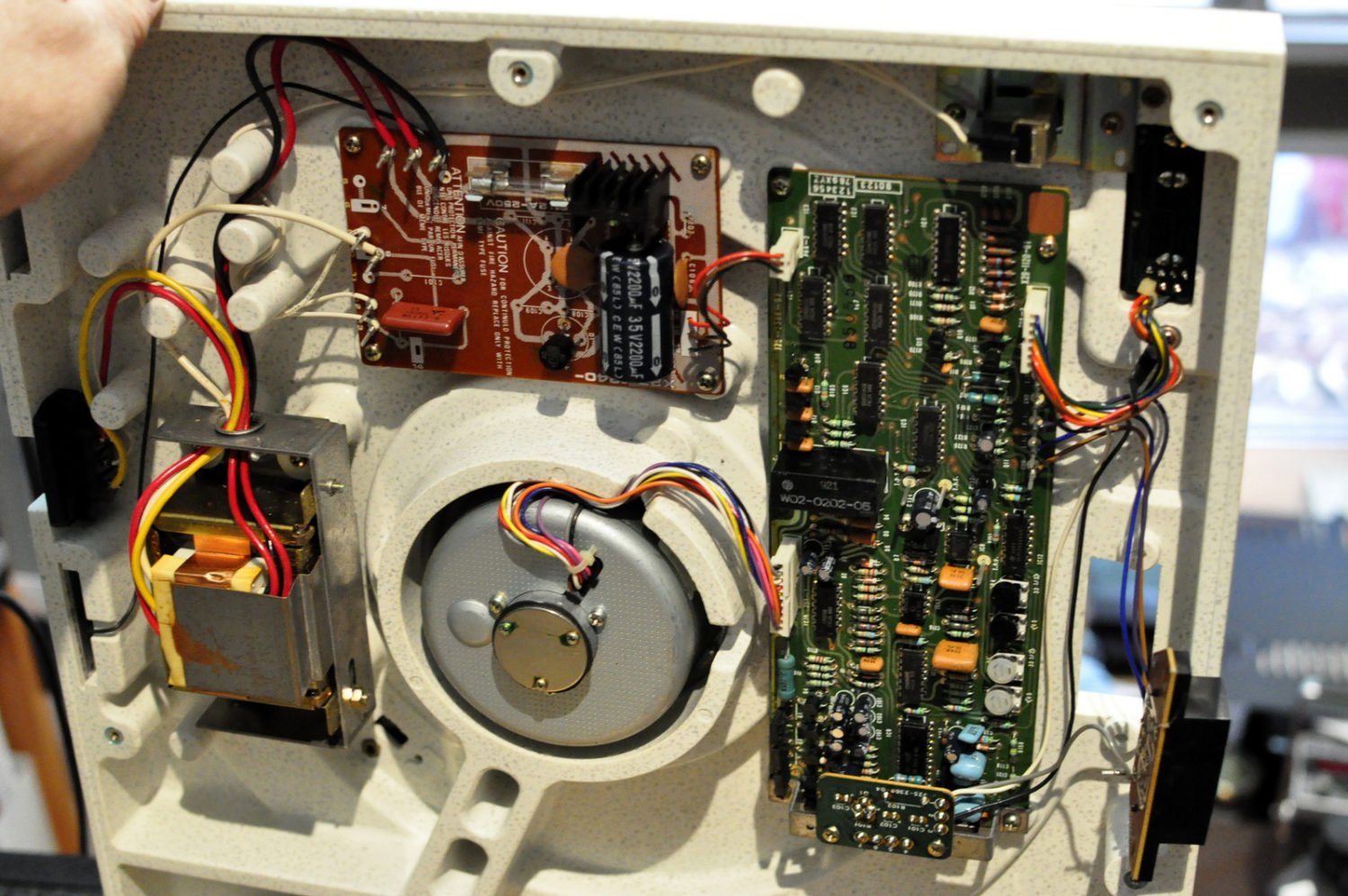
Inside the Deck
This shot of the insides of the KD-650 is worth further discussion. Top and centre, you will notice the power supply board. I sometimes upgrade this by replacing the single axial electrolytic capacitor with a better quality part, featuring higher capacitance, lower impedance and longer service life.
To the left, we have the mains transformer, which is rubber mounted so that it hangs and rests against soft rubber bushes when the deck is sitting right way up. You want to check that it is free to move and not binding on the rubber mounts, as this transformer is a source of mechanical hum which can be coupled dthrough to the cartridge. The best option would really be to remove the transformer from the chassis and mount it externally.
To the right, we have the control board and Kenwood didn’t skimp here. There are four adjustments, but don’t go fiddling with these unless you have access to a dual channel oscilloscope that you know how to use, and a precision multimeter. Two of the pots set the absolute speed, whilst the other two are involved with the phase locked loop control and electronic braking.
In the middle, you can see the large direct drive motor. Access to the bearing is via the circular metal plate and screws. You will see the rubber gasket protruding from around the edges of the cover plate. This gasket does deteriorate with age. I reworked the mating surfaces of the plate and bottom of the motor to improve the seal on my KD-600. On this deck though, I cleaned out the bearing and added synthetic bearing oil before carefully re-tightening the plate. This will be sufficient on most KD-600/650s.
Get in touch if you’d like me to service your KD-600 or KD-650.

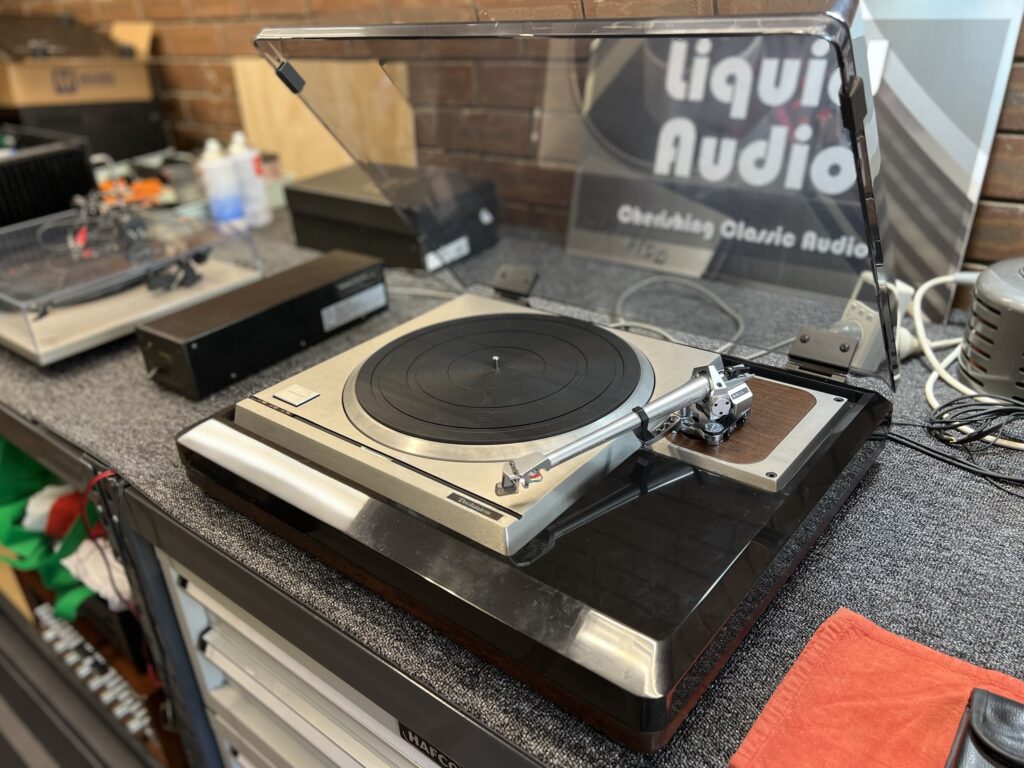
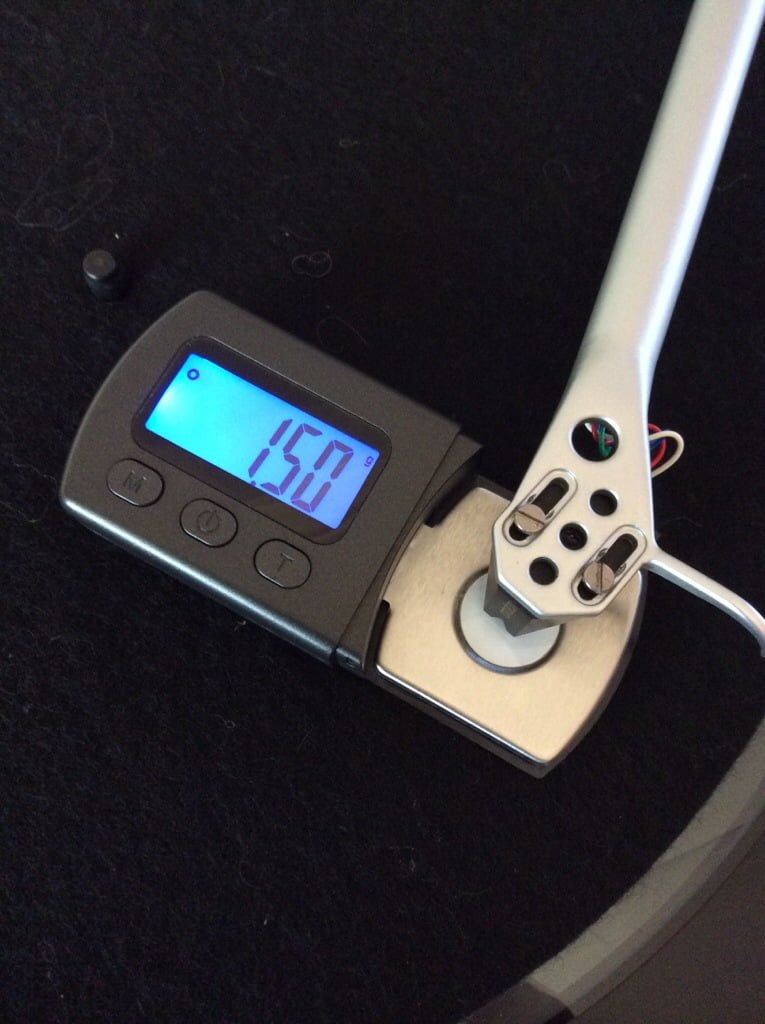
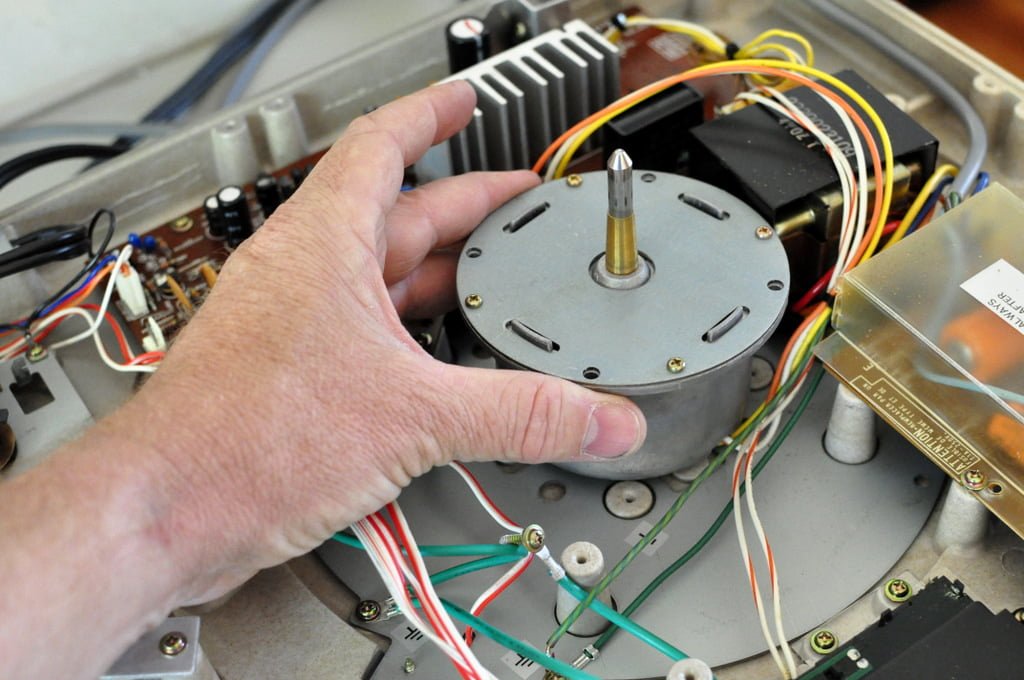
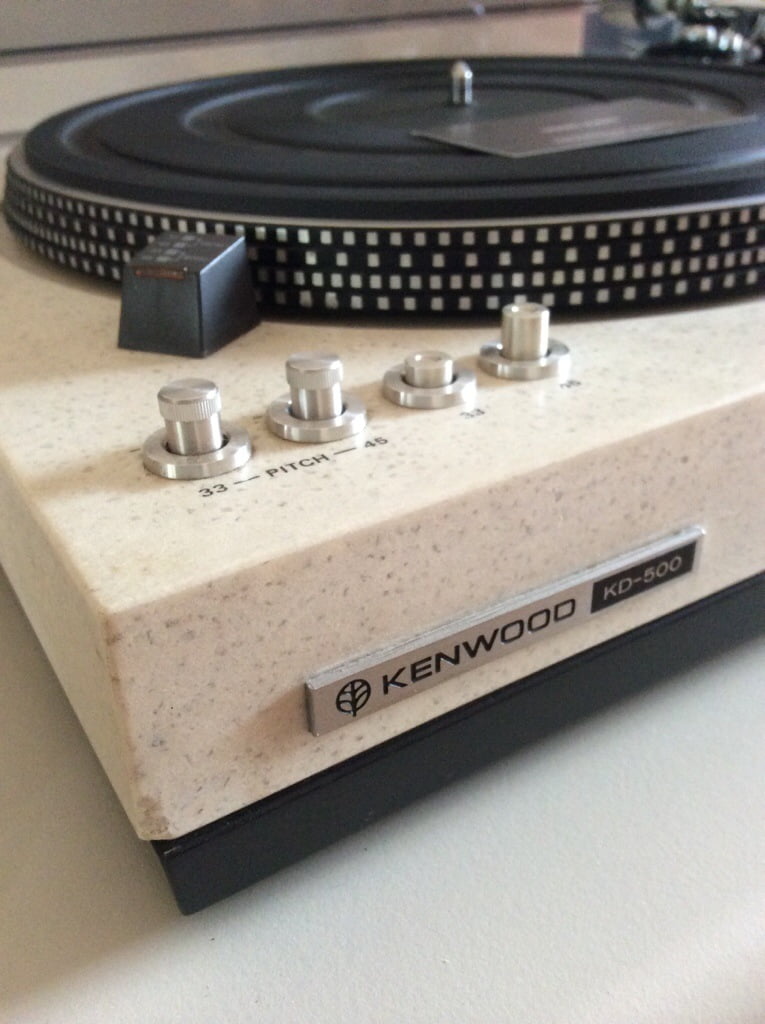
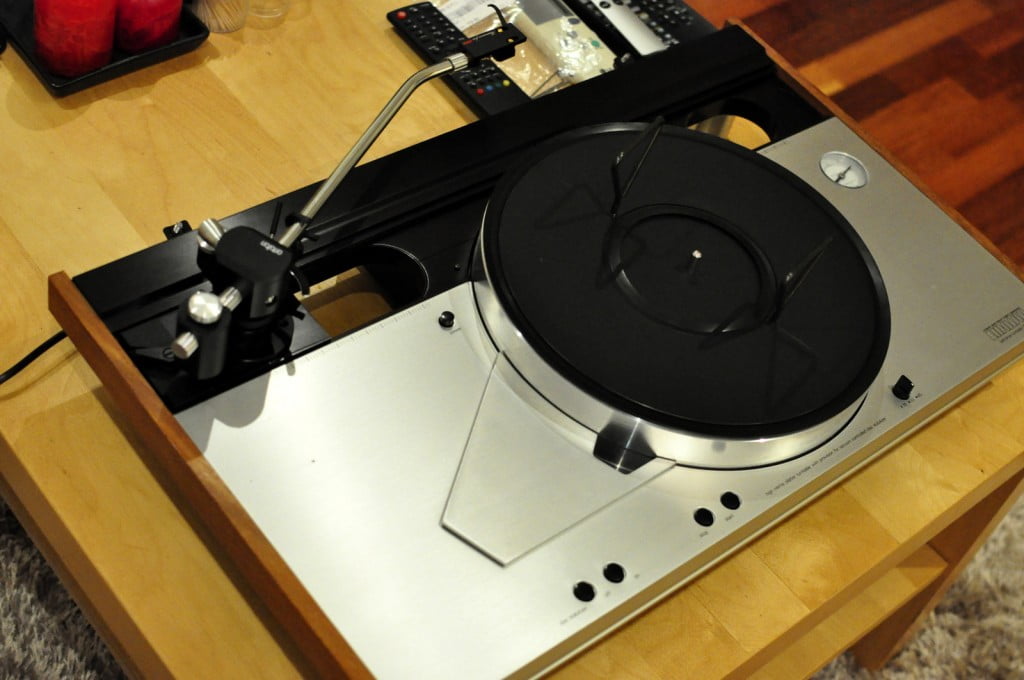
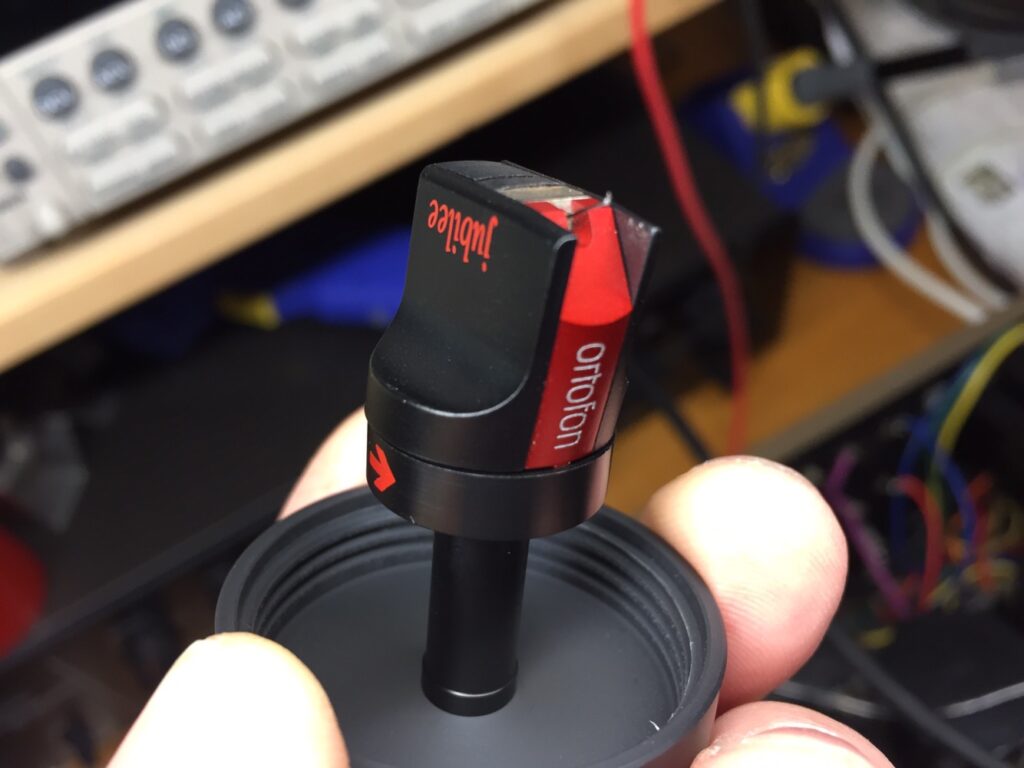
Hi
i have a Kenwood kd 600 .it taks of and Wild not get the rigth speed. Do you know wath the problem is.
Hi – without wanting to state the obvious, it sounds broken. I would need to get it on the bench to diagnose the cause and solution to the overspeeeding issue.
Hi, I have a KD 650, won’t speed lock – spins very fast, I have had a tech check it – caps OK, replaced the IC’s and its still fast, any other ideas? i live in NZ, how long do you think it would take to assess a turntable and fix this problem? I’m coming to Perth in May for 3-5 days, contemplating lugging it over …….how much do you charge to fix such a problem?
Hi Antony, thanks for making contact. Hard to say what the issue is or estimate a repair cost without seeing the deck first and testing some things. I would likely need more than 3 – 5 days, so I’d suggest lugging her here is also not the best way to go. A capable tech should definitely be able to fix this though, I’d suggest finding someone else over there who can actually diagnose the problem rather tha just changing parts. Is there anyone else there you can try?
Thanks Mike, I just found maybe 2-3 others in Auckland… making enquiries just now. These are great decks, but the number of techs who have experience with them is not so many now…
thanks for your suggestions,
regards,
Anthony
hi have you found a tech in auck to service these decks?thanks
Добрый день Mike!
Thanks for information on KD-650.
Forgive for Google the translation into English from Russian.
Recently I bought KD-650 in a good external shape.
The problem was that the motor worked at one high speed.
My friend, the specialist in repair of the PLL radio receivers had no experience with DD as players.
It found problem MM74C906N. The old chip wasn’t found in Russia. It was received from China by mail. Problems also were to the diode bridge and capacity in power supply unit. Changeover. Regulation. Everything works well. Regulation of the motor should be done in the look collected with a disk (Platter).
Nikolay
Moscow, Russia.
Thanks for sharing this information Nikolay, I’m very glad your KD-650 is now running well. I’m listening to Robert Plant’s The Principle of Moments on my KD-600 as we speak!
Mike, i have my KD-600 (speed switch tempramental) & KD-650 ( speed unstable, established there was a pcb problem rather than IC issues as replacing ICs didn’t solve issue in past) are repaired now…. i finaly found another deck with a good pcb & speed stable. Turns out the defective KD-650 also had a warped flywheel…. having the donor deck to uses as parts means i have 2 great turntables now. They had bearing service, re-capped PSU and a good clean – they run perfectly now. Brendan Purdy at Tisco in Hamilton, NZ did the repairs. I directed him to your webpage & gave him a PDF copy of the service manual but i think repair was straight forward…. having a donor unit helped heaps I’m sure.
Hi Anthony, great news and thanks for sharing. The touch sensors can be quite problematic, I’ve developed a way of refurbishing them which works very well in most cases. At least you have some spare parts now!
I’m a very happy chappy…. awaiting for the platter ring stabiliser to arrive from Ali.
I’m curious. I saw your write-up of the Yamaha GT-2000s. From your comments, it seems you aren’t that thrilled with the tonearm that comes stock with it. How would you compare it to a Kenwood KD-650 tonearm?
Hi Byron, thanks for your query. I’m fortunate that I get to work on and listen to equipment like this and I’ve listened to both of these machines extensively, but there are many variables with turntables that make comparisons tricky. Both are good arms and decks, the arm on the GT-2000 is probably the weakest part of that deck but that being said, it’s a decent arm which compares well to the 650’s arm. It isn’t the best-built arm though and it has some limitations. It’s a low-mass design which limits cartridge options, but it’s long which reduces distortion, as is the 650 arm, both being around 10 inches, so it’s swings and roundabouts with anything like this. Ultimately though, the comparison isn’t particularly useful because we can’t interchange arms across the two decks and the decks themselves are very different. A better question might be which of the two is a better vinyl replay system and that has to be the GT-2000, even with the slightly underwhelming arm. Both fantastic decks though, one could happily live with either. Let me know if you have any other questions about these decks.
Thank you Mike!
I appreciate your feedback. I was considering acquiring a KD-650 arm for my KD-550, and I was wondering if it would work well with the GT-2000, as I see one coming here in the near future. However, if I get a GT-2000, it would be necessary to sell the KD-550 to help fund the purchase. However, a KD-650 arm may not my best option under these circumstances. So I’m going to pass until the dust settles.
Thanks again!
Byron
Hi Byron, no problem at all. I always think it’s best to leave decks like these with their factory the arms. A KD-500 or 600 are better options for arm swaps as they don’t come with arms originally. The GT-2000 always came with an arm and changing it is tricky. From memory, there is only one other arm that will slot onto the GT, anything else would require custom arm boards and then you have harmed the resale and originality of the deck. If you ARE going to put a different arm on the GT, then it really should be one that is much better, like say an SME IV or V, preferably a long one if it would fit. Swapping it for another Japanese arm of broadly similar quality would not be a good move. Anyway, good luck with your TT project!
Hi Mike,
Thanks for your wealth of information on the KD-600 / KD-650. After first reading about them on your site I eventually found one for sale locally! Stoked. It’s in good shape and works well except it won’t brake – instead spinning up to 45RPM until power is cut, or the platter is manually stopped. Quartz lock is working at both speeds.
Have you encountered this fault? I’m hoping a calibration would restore the braking function to correct operation!
Thanks, Rick
Hi Rick, thanks for the kind words and glad you found one of these wonderful decks for yourself! Many operational issues are related to the correct/incorrect setup of the drive and braking circuits. This is one of the trickiest decks to set up correctly, because of the need for a dual-channel oscilloscope, good probes and an understanding of how to use all that get the right waveforms. Also, logic faults are common with these machines and one bad gate somewhere can cause the sort of issues you’ve described. Tracing these faults can be tedious, so the first step is to ensure that all electronic adjustments are correctly made. From there, further fault tracing can proceed, if required.
Hi Mike
I have a Kenwood kd 650 and have a strange problem.It didn’t start at all or powered up speed indicators,so I checked the power at on/off switch and ok.I checked the power at touch control and suddenly everything started to work.I reinstalled everything and it worked great until it sat off powered for a couple of hours,rechecked for power and everything checked out the same except I disconnected the touch controls from main board checked for corrosion or bad contact,everything seems ok reconnect and it started to work normal for the rest of the day.Next day same problem,the quarts indicator turns on every time and sometimes the 45 indicator blinks one time when turn power on. Anything comes to mind?and where can I buy spare parts if it’s the touch switch or speed lock indicator (plastic housing is warped and light diod is out)
Thank you
Ingemar
Hi Ingemar, thanks for your enquiry. These turntables can become unreliable with age and my best advice is to take her to someone very experienced with KD-600s and 650s for maintenance as these issues can usually be solved fairly easily with the right approach. Carefully cleaning everything with materials that leave no residue and precision adjustment of the drive and braking circuits are good starting points. Good luck getting her sorted and we have an advisory service if you need it, accessible via the contact page.
Ever seen one of these run in reverse on one speed only? Some of the ICs look like they’re obsolete now also.
Hi Mikey, yes I’ve seen these spin backwards, forwards, super-fast, at different speeds and even not at all! Thankfully, most ICs are in fact still readily available and I have all of them here in stock.